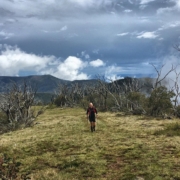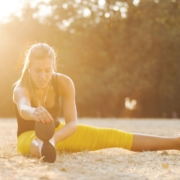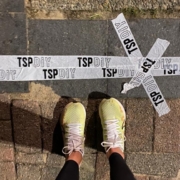What should I take with me during ultra-running adventures?
I’ve been asked recently by a number of people who are getting started on their ultra running journey, what do you carry for your longer endurance runs and ultra-running events?
The right gear can mean the difference between having an average run and a frothing awesome one. Conditions can change in an instant. To get the best enjoyment out of ultra-running, it pays to be prepared. You should, of course, refer to your specific event’s mandatory gear list.
Here is a list of the gear that I always carry with me when doing endurance runs or ultra-running events.
Running Pack
My go-to running vest for any ultra-endurance events is my Salomon Advanced Skin 12L, but this comes down to personal choice and fit. I also have several other packs and vests that I use when training or commuting, including an older version of the Salomon SLab, Kathmandu, Nathan and Osprey. My wife is a big fan of the Ultimate Direction Signature series vests.
Salomon is on the higher end price-wise and doesn’t come with the bladder or flasks, but for fit and function, I find they are superior. Other brands such as Ultimate Direction and Nathan do come with flasks or bladders. It’s best to shop around and find what fits you both physically and on price.
Hydration
Depending on the distance or the mandatory gear requirements, I carry two 500ml Salomon soft flasks on my chest and a 1.5L Salomon Soft reservoir in my pack. I fill my 1.5L reservoir with fresh water only, as this can also act as a refill for my flasks plus you should be getting the majority of your hydration from clean water, not supplements. In the chest flasks, I keep Tailwind mix in one and SOS Hydration mix in the other. The new Salomon soft flasks now come with wide mouth openings making it a lot easier to add your powder!
First Aid Kit
An essential item for offroad, remote location events. I use Ultralight / Watertight .5 Medical Kit from Adventure Medical Kits which contains your basic first aid items including bandages, gauze, sterilisation swabs and surgical gloves. It also includes my first aid blanket. The first aid kit is not so crucial for events that are well supported by medical teams on hand, but the first aid blanket should be a mandatory piece of your running kit, you never know when you may need to use it and it may not be you that needs it!
And for my runs in Australia I always carry a snake bite bandage!
Anti-chafe Cream
The best approach to beating chafe is lube up early! If you need to carry some with you, my preference is Neat Effect 3B Action Cream, but there are several great products available including Squirrels Nutbutter, Body Glide and 2Toms.
Sunglasses, Hat and Sunscreen
I’m a big fan of Hawkers & Co. sunglasses. Their lightweight and robust design means they can take a beating and they’re cheap!
My V&B Athletic cap keeps the sun off and Cancer Council Active Dry Touch Sunscreen is a must for my fair skin, with a dry-touch and lightweight non-greasy formula with a matte finish that provides SPF50+ broad spectrum protection.
Waterproof Jacket
A good waterproof jacket is a must for any kit. Look for one with a hood and sealed seams plus be ready to spend a little extra to get a good quality jacket that will stand up against the elements! I’ve witnessed too many events where participants have gone for the cheap option only to find out as soon as the weather turns ugly, their $50 special from Kmart isn’t up to the task. Mine is an ultra-light Kathmandu Zeolite ngx2.5. It’s both water and windproof, breathable, abrasion-resistant and super quick drying – you can shake it dry and it weighs less than 300g! Its designed to fit over the top of your run vest or pack and folds away into itself (using its side zip pocket) making it easy to store in your pack or vest.
Head Torch
Ay Up Lighting Systems have been my headlamp of choice for years now. Their gear is bomb-proof, with excellent battery life and they will light up your path like it’s daytime! Petzl have come a long way with their lightweight models, longer battery life and their range are reasonably priced. I always carry a small Led Lenzer headlamp as my back-up spare.
Trekking Poles
These can reduce the load on your legs by up to 30% particularly on steep climbs and decents. I use Black Diamond Ultra Distance Carbon Z poles.
Waterproof Cases
Keep your gear dry! Exped Zip Seal smart phone cases are fantastic because you can easily use your phone while it’s still in the case. SeaToSummit Ultra SIL bags keep things such as clothing and food dry in wet conditions. A cheaper alternative is to use zip-lock bags. But experience has proved these are not very robust and are usually single-use, so not good for the environment!
Backup Power
The last thing you want is for your mobile phone to run out of juice when you need it most! I carry a Cygnett 4,400mAh Power Bank. It’s light-weight (110g) and gives me up to 2x full charges of my smartphone or GPS watch. Make sure you carry the appropriate cables for your device!
Compass
This is a carry over habit from my hiking days, just in case the GPS fails!
Nutrition
Nutrition is a very individual thing, but whatever works for you, make sure you test it out as part of your training. My preferred carry items are Clif Bars Crunchy Peanut Butter flavour, Smiths Salt and Vinegar chips (go for the Multipack 6 pack, they take up much less room in your pack) and Vegemite sandwiches. I also carry a few spare sachets of SOS Hydration with me.
My drop bags have these same items ready for me to replenish with at check points when I run out.
Collapsible Cup
Leave no waste and be ready to drink anywhere! My collapsible silicone cup was part of a goodie bag from a Sky Running Ultra several years ago. You can get pick them up online from Pure Running.
Tissues
If there is a long distance between checkpoints and the call of nature strikes, you may have no choice but to go off trail and do your business. This is why I carry a small travel packet of tissues, just in case!
Always follow “leave no trace principles” – dig a ‘cathole’ 15 cm to 20 cm deep at least 30 metres from the trail and then cover the hole when finished.
Jase Cronshaw is co-founder and co-owner of V&B Athletic. He is an Australian endurance athlete and coach, procrastinating artist, teetotalist, and a guy who loves to run! You can find him on Instagram @coachcronshaw
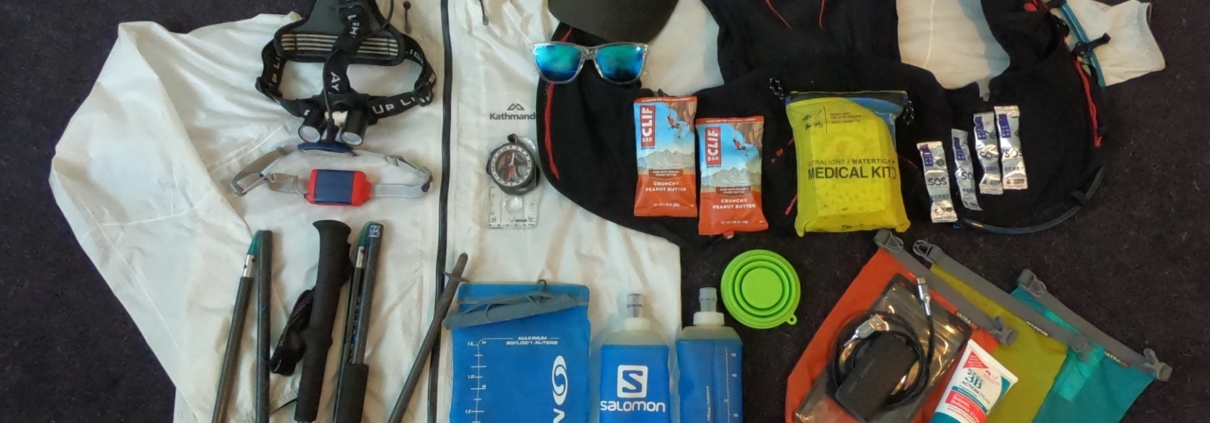 © V&B Athletic
© V&B Athletic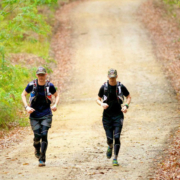 © V&B Athletic
© V&B Athletic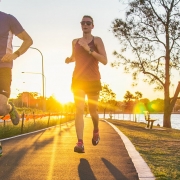 © Pace Athletic
© Pace Athletic